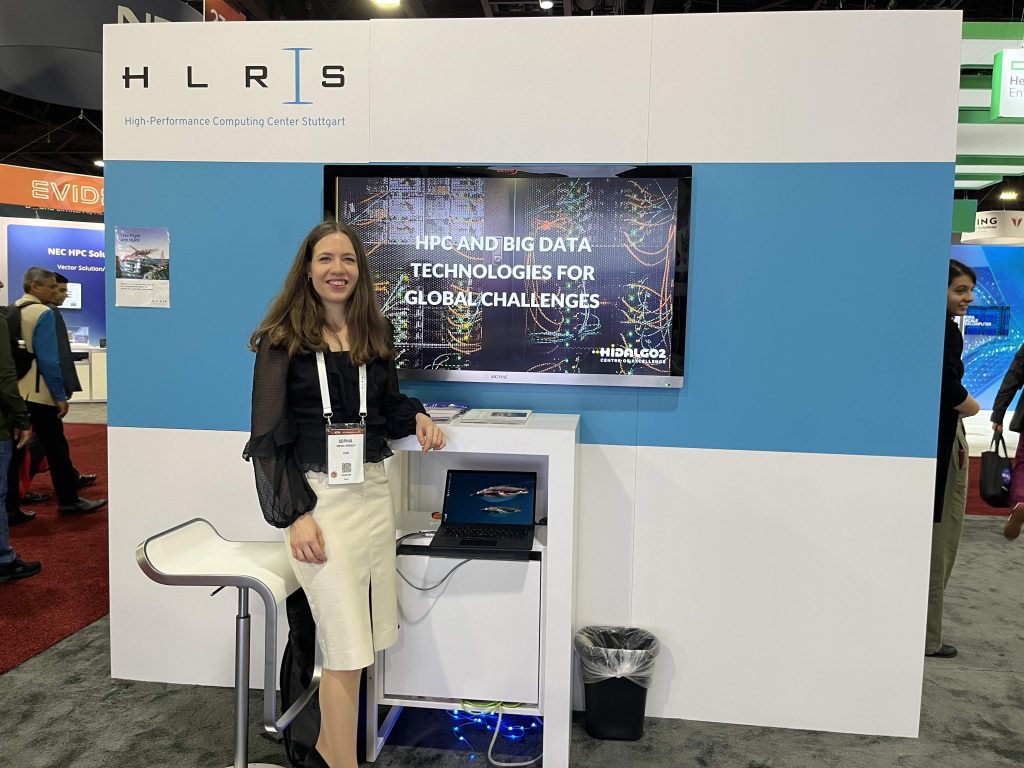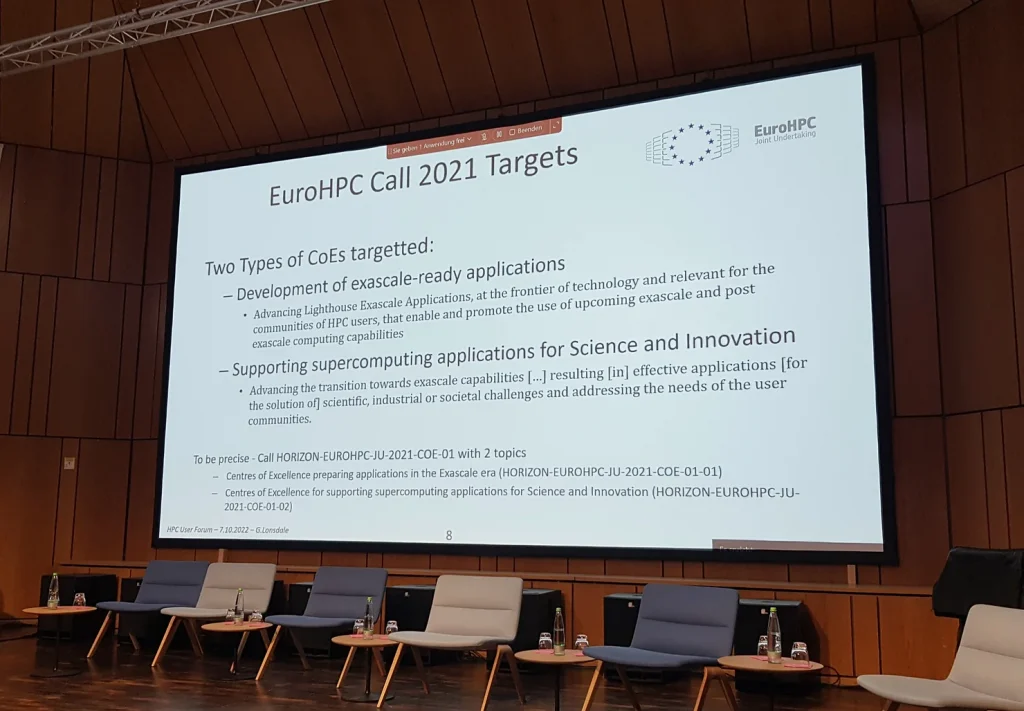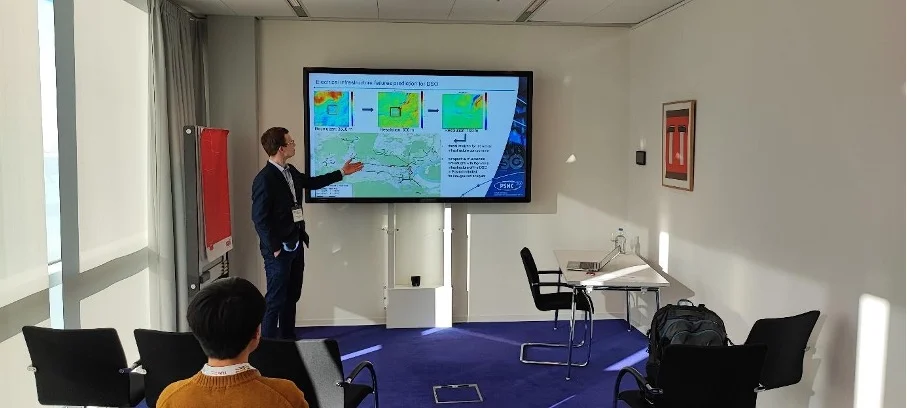The Supercomputing 2024 (SC24) conference was held in Atlanta, Georgia from November 17–22, 2024, drawing approximately 17,000 attendees from around the globe. Known for its blend of cutting-edge research presentations and industry exhibits, the event provided an excellent platform to represent HiDALGO2 and its ongoing work in high-performance computing for societal challenges.
Representing HiDALGO2 on the Exhibition Floor
HiDALGO2 was prominently featured at several exhibition booths, including those of the High-Performance Computing Center Stuttgart (HLRS) and the EuroHPC Joint Undertaking (JU). Visitors to these booths could engage with project materials, including videos and handouts, which outlined HiDALGO2’s mission and its role in harnessing computational power to address pressing global issues.
At the HLRS booth, we highlighted HiDALGO2’s contributions with the help of engaging materials and interactive sessions. One of the key attractions was the 3D interactive visualization of a wildfire simulation, developed by our Spanish partner, Meteogrid (MTG). This demonstration provided an immersive glimpse into the challenges of wildfire modeling and mitigation. Flavio Galeazzo of HLRS skillfully guided attendees through this visual experience, explaining the computational complexities and real-world relevance of the work.
Exploring the Wildfire Use Case
Meteogrid’s Wildfires Use Case is a cornerstone of HiDALGO2, aiming to address the rising threat of forest fires fueled by changing climate conditions.
Wildfires are becoming increasingly intense and harder to control, particularly in the Wildland-Urban Interface (WUI), where forests and populated areas meet.
The 3D visualization showcased at SC24 exemplifies the integration of high-resolution computational models with advanced visual tools. This simulation draws on decades of wildfire modeling research, integrating factors like local wind dynamics, fire-atmosphere interactions, and smoke dispersion. Achieving this level of detail requires vast computational resources, leveraging both CPUs and GPUs for scalable performance.
The visualisation serves multiple purposes: enhancing scientific analysis, enabling risk assessment, and raising awareness of wildfire risks among a broader audience. Many visitors expressed interest in how such simulations can be applied for emergency planning and public education.
A Platform for Collaboration
SC24 was more than a showcase; it was an opportunity to connect with experts, researchers, and practitioners from around the world. The event underscored the importance of interdisciplinary collaboration in addressing challenges like wildfire mitigation and provided valuable feedback for refining the tools and models being developed under HiDALGO2.




